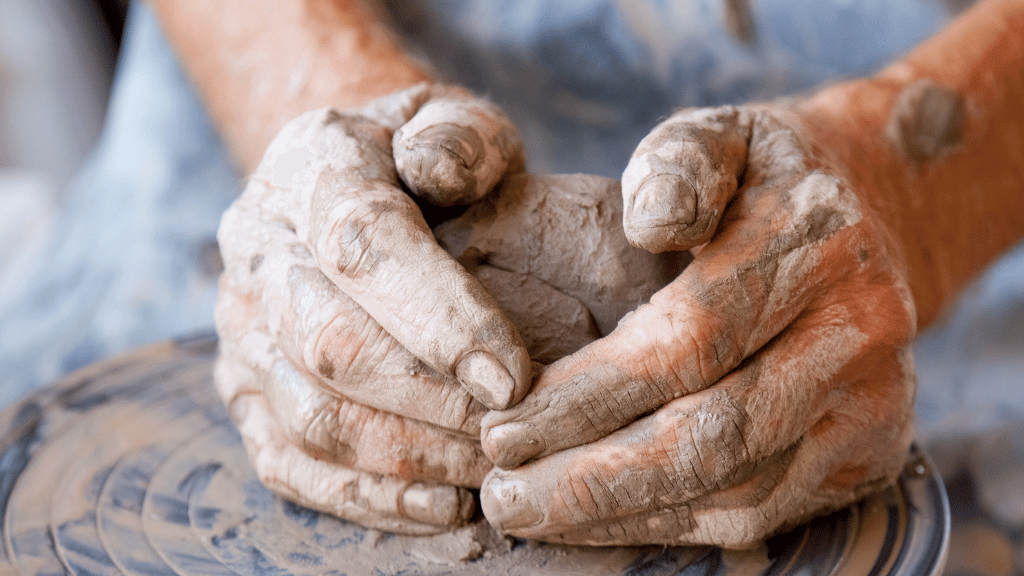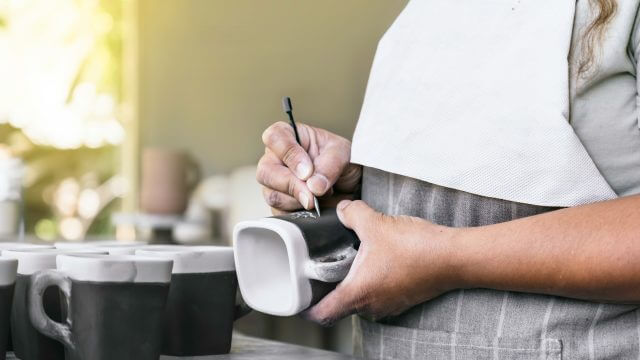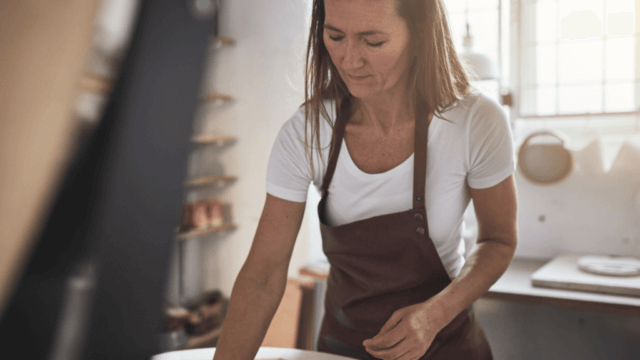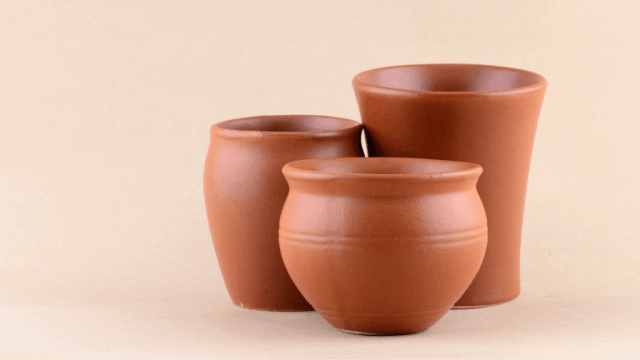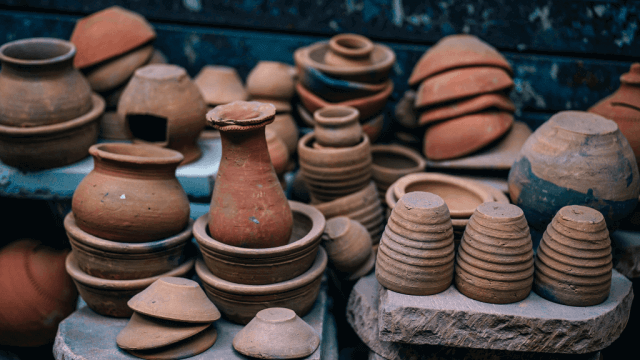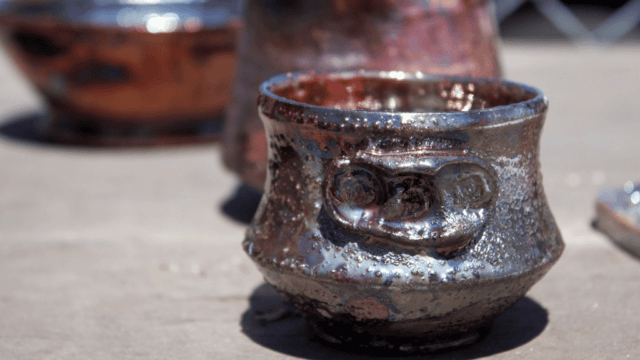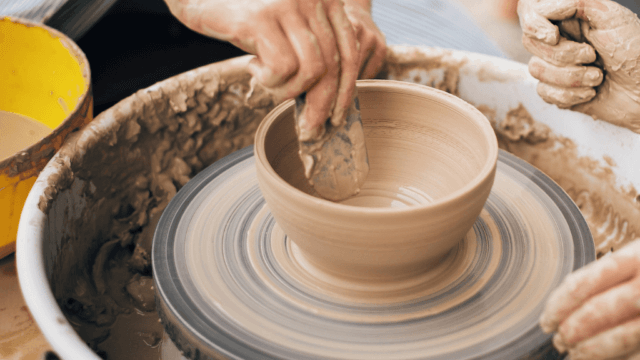Slipware pottery is a ceramic technique that involves applying a liquid clay mixture, known as slip, onto a clay body to create textures, designs, and patterns.
This distinctive decorative approach has been used for centuries across various cultures, turning everyday objects into functional works of art.
Understanding Slipware Pottery
Slipware pottery is an ancient ceramic art form where a liquid clay mixture called slip is applied onto the surface of a clay body, creating unique textures, designs, and patterns.
This technique enhances the visual intrigue of everyday objects, marrying functionality with creative expression.
Components of Slip
Slip is a mixture of clay and water, blended to create a smooth, creamy consistency.
It can be colored with various oxides and stains, lending versatility and aesthetic appeal to slip-decorated pottery.
Common Slip Additives
- Iron oxide: produces red or brown shades.
- Cobalt oxide: imparts blue hues.
- Copper oxide: creates green or turquoise tones.
- Manganese dioxide: offers purple and browns shades.
Slip Application Techniques
There are several popular methods for applying slip to pottery, allowing artists to showcase their unique styles:
Brushing
Using brushes, artists can paint delicate patterns or bold designs onto the pottery.
They can employ different brush sizes and shapes to achieve diverse results.
Trailing
Trailing involves squeezing or dripping slip out of a small container with a nozzle, producing lines and dots that form intricate patterns reminiscent of piping on icing.
Slip-Marbling
To achieve a marbled effect, artists blend two or more differently colored slips before using a brush or sponge to apply the combination onto a pre-dampened surface of the pottery, allowing the colors to swirl and create a mesmerizing design.
Slip Dipping
By dipping entire sections of the pottery piece into a container of slip, artists can achieve solid colors or a partial glazing effect.
This technique allows for the layering of multiple slips, creating interesting visual transitions.
Slipware Pottery Firing Techniques
Various firing techniques can be used to bring out the vivid colors and textures of slip-decorated pottery.
However, the most common temperatures for firing pieces range from 1830°F (1000°C) to 2370°F (1300°C), coupled with careful monitoring to achieve the desired outcome.
Oxidation Firing
Oxidation firing exposes the slipware pottery to an oxygen-rich environment, enabling the colored oxides to fully react and create brighter, more vibrant hues.
Reduction Firing
Reduction firing is carried out in a low-oxygen environment such as a gas kiln.
The limited supply of oxygen alters the color development, often leading to darker and richer tones in the finished piece.
Raku Firing
Raku firing is a Japanese technique wherein a piece is rapidly fired and then cooled, often with combustible organic materials.
The process results in unpredictable color variations and patterns, making each raku-fired slipware piece a unique work of art.
History of Slipware Pottery
Slipware pottery has a rich global history, with origins dating as far back as 4000 BCE in ancient Sumeria.
It later spread to Egypt, China, and across Europe, where its popularity continued to grow.
During the English Renaissance, slip-trailed designs became increasingly prevalent, with pieces from the Staffordshire and Yorkshire regions being particularly treasured.
Regional Variations in Slipware Styles
Over time, different regions developed their distinctive slipware pottery styles:
English Slipware
British slipware is recognized for its bold and energetic execution, with artists often favoring warm, earthy tones.
A notable example is the harvest jug, a vessel adorned with motifs inspired by agriculture and social life.
Roman Sigillata Pottery
Using a blend of slip and engobe (colored clay), Roman potters created fine, tableware with red and black embellishments, often sporting intricate geometric patterns or scenes from mythology.
Puerto Rican Loza
Loza is a centuries-old Puerto Rican pottery style that exhibits intricate slip-decorated patterns on the surface of white and gray clay.
The motifs often combine indigenous Taíno and Spanish influences, resulting in a rich tapestry of cultural symbolism.
Contemporary Slipware Pottery
Slipware pottery remains a popular choice for modern ceramic artists who wish to preserve traditional techniques or explore their creative potential.
Contemporary slipware encompasses a vast array of styles, often mixing different application methods and combining traditional and innovative forms.
Collections and exhibitions of slipware continue to engage enthusiasts and inspire the next generation of potters.
Caring for Slipware Pottery
To ensure the longevity of slipware pottery, take the following steps when cleaning and handling your pieces:
- Avoid exposing the pottery to extreme temperature changes as it may cause cracks or breakage.
- Handwash using a soft sponge and mild detergent, then rinse with warm water and pat dry with a soft cloth.
Refrain from using scouring pads or abrasive cleansers to prevent scratches or damage to the pottery surface.
- Store your slipware pottery in a cool, dry space, away from direct sunlight or extreme humidity to prevent fading or mold growth.
FAQs About Slipware Pottery
For those seeking additional information on slipware pottery, we’ve compiled a list of frequently asked questions with direct and concise answers to enrich your understanding of this captivating ceramic art form.
What clay is best suited for slipware pottery?
Earthenware and stoneware clay bodies are ideal for slipware pottery due to their porous nature, which allows better adherence of the slip to the surface.
Both clays are also receptive to the broad color range possible with slip-based decorations.
What are the benefits of using slip in pottery?
Slip enhances pottery by allowing artists to incorporate a variety of colors, patterns, and textures.
Furthermore, it acts as a bonding agent, helping to prevent glazes from flaking or peeling, while also contributing to an improved glaze fit and reducing crazing.
Can translucent or semi-transparent slips be created?
Yes, translucent or semi-transparent slips can be achieved by adjusting the thickness of the slip and through the choice of specific raw materials.
Thinner slips result in a more translucent appearance, while using materials such as nepheline syenite or frit can also enhance translucency.
Can you combine slipware techniques with other ceramic methods?
Absolutely.
Many artists fuse slipware techniques with other ceramic methods, such as carving, sgraffito, and inlay, to create unique and diverse results.
Experimenting with multiple techniques can help potters find their personal style and push artistic boundaries.
Is slipware pottery food safe?
Slipware pottery is generally considered food safe.
However, the safety depends on the materials used, including slips and glazes, as well as the firing process.
To ensure food safety, verify that the materials and firing techniques conform to the established guidelines for food-safe ceramics.
